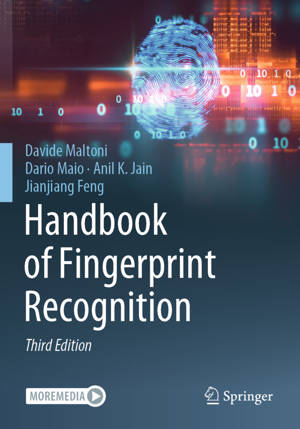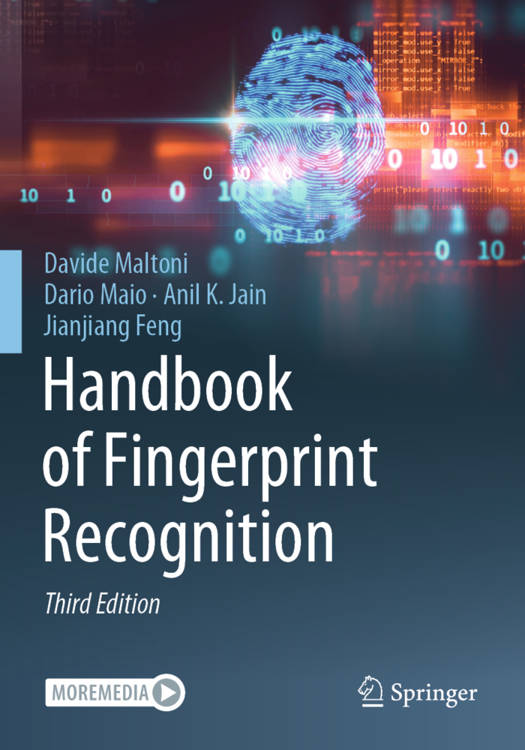
- Retrait gratuit dans votre magasin Club
- 7.000.000 titres dans notre catalogue
- Payer en toute sécurité
- Toujours un magasin près de chez vous
- Retrait gratuit dans votre magasin Club
- 7.000.000 titres dans notre catalogue
- Payer en toute sécurité
- Toujours un magasin près de chez vous
Handbook of Fingerprint Recognition
Davide Maltoni, Dario Maio, Anil K Jain, Jianjiang Feng
Livre broché | Anglais
137,45 €
+ 274 points
Format
Description
With their distinctiveness and stability over time, fingerprints continue to be the most widely used anatomical characteristic in systems that automatically recognize a person's identity.
This fully updated third edition provides in-depth coverage of the state-of-the-art in fingerprint recognition readers, feature extraction, and matching algorithms and applications. Deep learning (resurgence beginning around 2012) has been a game changer for artificial intelligence and, in particular, computer vision and biometrics. Performance improvements (both recognition accuracy and speed) for most biometric modalities can be attributed to the use of deep neural networks along with availability of large training sets and powerful hardware. Fingerprint recognition has also been approached by deep learning, resulting in effective and efficient methods for automated recognition and for learning robust fixed-length representations. However, the tiny ridge details in fingerprints known as minutiae are still competitive with the powerful representations learned by huge neural networks trained on big data.Features & Benefits:
- Reflects the progress made in automated techniques for fingerprint recognition over the past five decades
- Reviews the evolution of sensing technology: from bulky optical devices to in-display readers in smartphones
- Dedicates an entire new chapter to latent fingerprint recognition, which is nowadays feasible in "lights-out" mode
- Introduces classical and learning-based techniques for local orientation extraction, enhancement, and minutiae detection
- Provides an updated review of presentation-attack-detection techniques and their performance evaluation
- Discusses the evolution of minutiae matching from rich local descriptors to Minutiae Cylinder Code
- Presents the development of feature-based matching: from FingerCode to handcrafted textural features to deep features
- Reviews fingerprint synthesis, including recent Generative Adversarial Networks
The revised edition of this must-read reference, written by leading international researchers, covers all critical aspects of fingerprint security system design and technology. It is an essential resource for all security and biometrics professionals, researchers, practitioners, developers, and systems administrators, and can serve as an easy-to-read reference for an undergraduate or graduate course on biometrics.
Davide Maltoni is full professor in the Department of Computer Science (DISI) at the University of Bologna, where he also co-directs the Biometrics Systems Laboratory (BioLab).
Dario Maio is full professor in the DISI and a co-director of the BioLab.
Anil K. Jain is university distinguished professor in the Department of Computer Science and Engineering at Michigan State University. Jianjiang Feng is associate professor in the Department of Automation at Tsinghua University.
Spécifications
Parties prenantes
- Auteur(s) :
- Editeur:
Contenu
- Nombre de pages :
- 522
- Langue:
- Anglais
Caractéristiques
- EAN:
- 9783030836269
- Date de parution :
- 05-07-23
- Format:
- Livre broché
- Format numérique:
- Trade paperback (VS)
- Dimensions :
- 168 mm x 240 mm
- Poids :
- 1125 g







